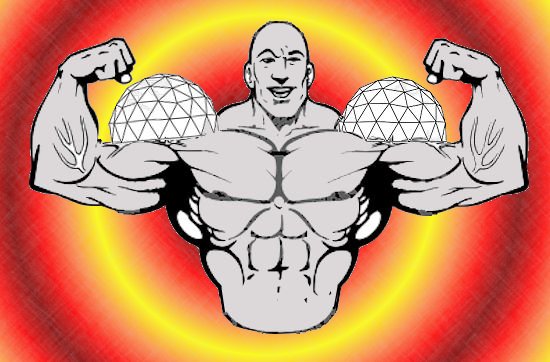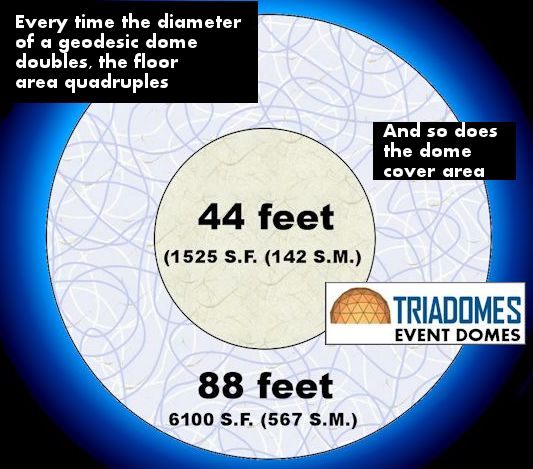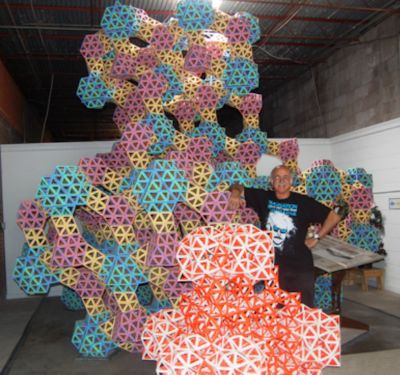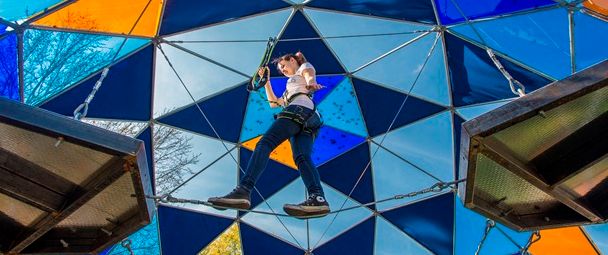One of the unique characteristics of a geodesic dome is how the larger it gets, the more proportionally stronger it becomes. That does not mean you can simply take any design, make it bigger and expect the structure will be stronger. This is why the key words here are “proportionally stronger“.
When building larger domes, the dead weight (the weight of the structure itself) increases, and the length and strength of the struts have less structural integrity (more likely to bend, less ability to support weight). One solution to address these issues is to use lighter, stronger materials. Another option is to increase the frequency of the geodesic dome (more struts per area).






